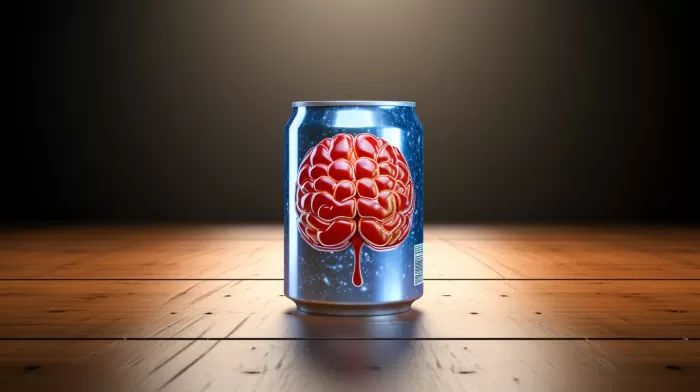Are you tired of never feeling full despite eating more than enough? It might be due to the types of food you’re consuming, especially if they contain high fructose corn syrup (HFCS) – a common ingredient in soft drinks. The way our brains respond to fructose and glucose is vastly different, as shown by a preliminary study published in the Journal of the American Medical Association.
Fructose vs. Glucose
Brain magnetic resonance images reveal that glucose consumption reduces cerebral blood flow and activity in the regions responsible for regulating appetite. By doing so, glucose makes you feel full and satisfied, while fructose does not produce the same results.
There has been a noticeable parallel between the increase in fructose consumption and the prevalence of obesity over the years. Many believe that high-fructose diets are responsible for weight gain and insulin resistance. Studies show that fructose consumption leads to smaller increases in satiety hormones compared to glucose. In rodents, fructose administration provokes feeding, while glucose promotes satiety. This suggests that fructose increases food-seeking behaviors and overall food intake.
Dr. Kathleen A. Page, a researcher at Yale University School of Medicine, stated that the opposite responses to fructose are related to reduced systemic levels of the satiety-signaling hormone insulin. This means that the difference isn’t due to fructose’s inability to cross the blood-brain barrier or lack of hypothalamic expression of genes necessary for fructose metabolism.
The Dangers of High Fructose Corn Syrup
HFCS, a sweetener derived from corn, has become increasingly popular as a sugar substitute in many processed foods and beverages. The use of HFCS has skyrocketed in the past few decades, and its potential health risks are concerning.
It is now widely recognized that added sugars, such as those found in soft drinks, can contribute to obesity, heart disease, and type 2 diabetes risk. HFCS, in particular, has been linked to increased fat storage, especially in the liver, which can lead to fatty liver disease and inflammation.
How to Reduce Fructose Consumption
Reducing fructose consumption is possible through diligent label reading and making healthier food choices. Here are some tips to help you get started:
- Limit processed foods: Processed foods are often loaded with unhealthy ingredients like HFCS. Stick to whole, natural foods like fruits, vegetables, lean meats, and whole grains as much as possible.
-
Avoid sugary drinks: Soft drinks, energy drinks, and fruit juices typically contain high amounts of added sugars. Opt for water, herbal tea, or natural fruit-infused water instead.
-
Check food labels: Always read food labels to look for added sugars, including HFCS, and avoid products that include it in the ingredient list.
For more information on the impact of fructose on the brain and body, visit health.gov [https://health.gov/myhealthfinder/topics/everyday-healthy-living/nutrition/low-sugar-nutrition-tips] and the American Heart Association’s website [https://www.heart.org/en/healthy-living/healthy-eating/eat-smart/sugar/added-sugars].
Adopting a Healthier Lifestyle
Moving toward a healthier lifestyle includes being more conscious of the food choices you make and the impact those choices have on your body. By cutting back on fructose consumption and making more informed dietary choices, you can help regulate your appetite, promote satiety, and prevent weight gain. The knowledge you gain from understanding the effects of food ingredients on your body will help you make healthier decisions and improve your overall well-being.



